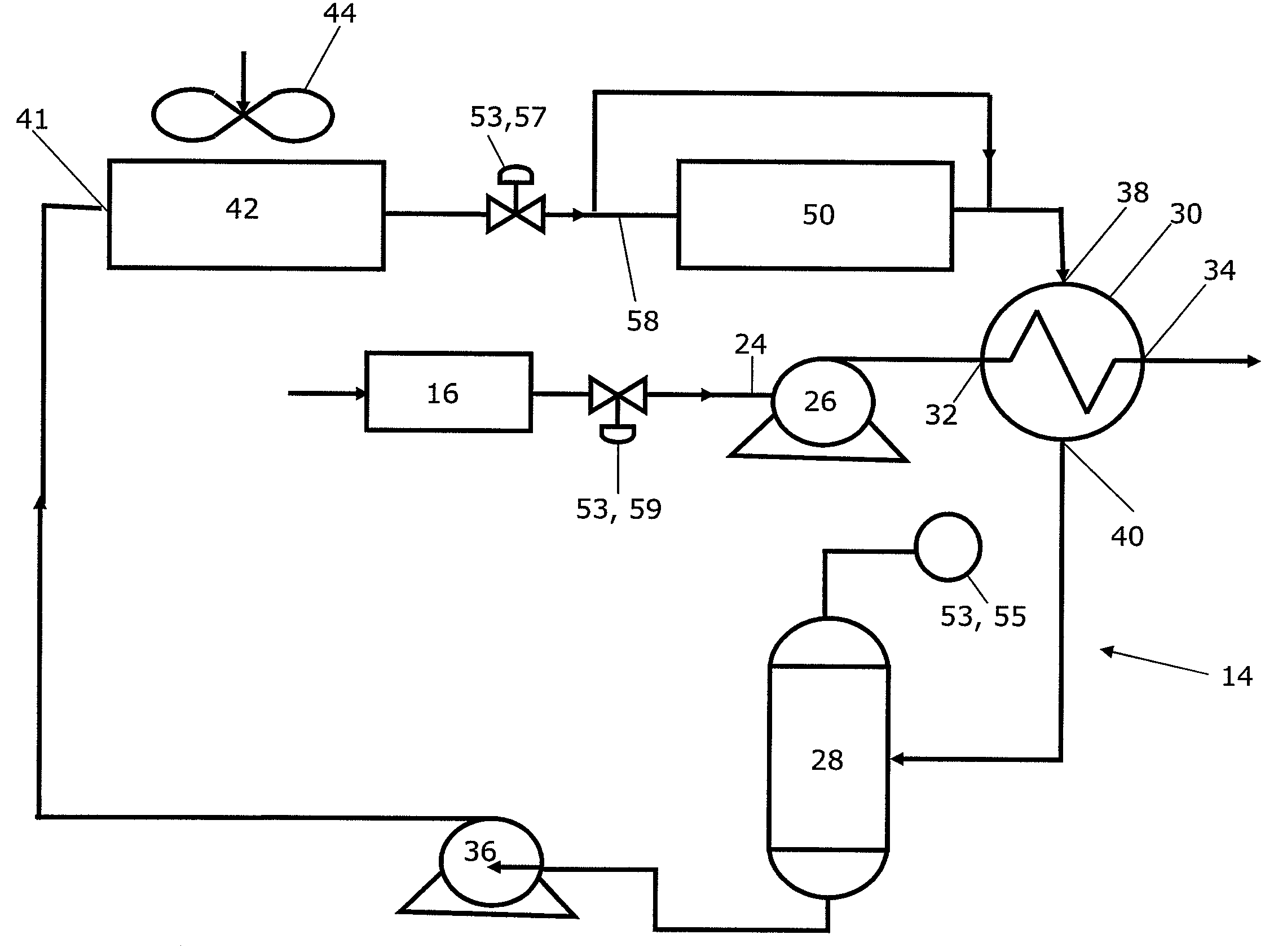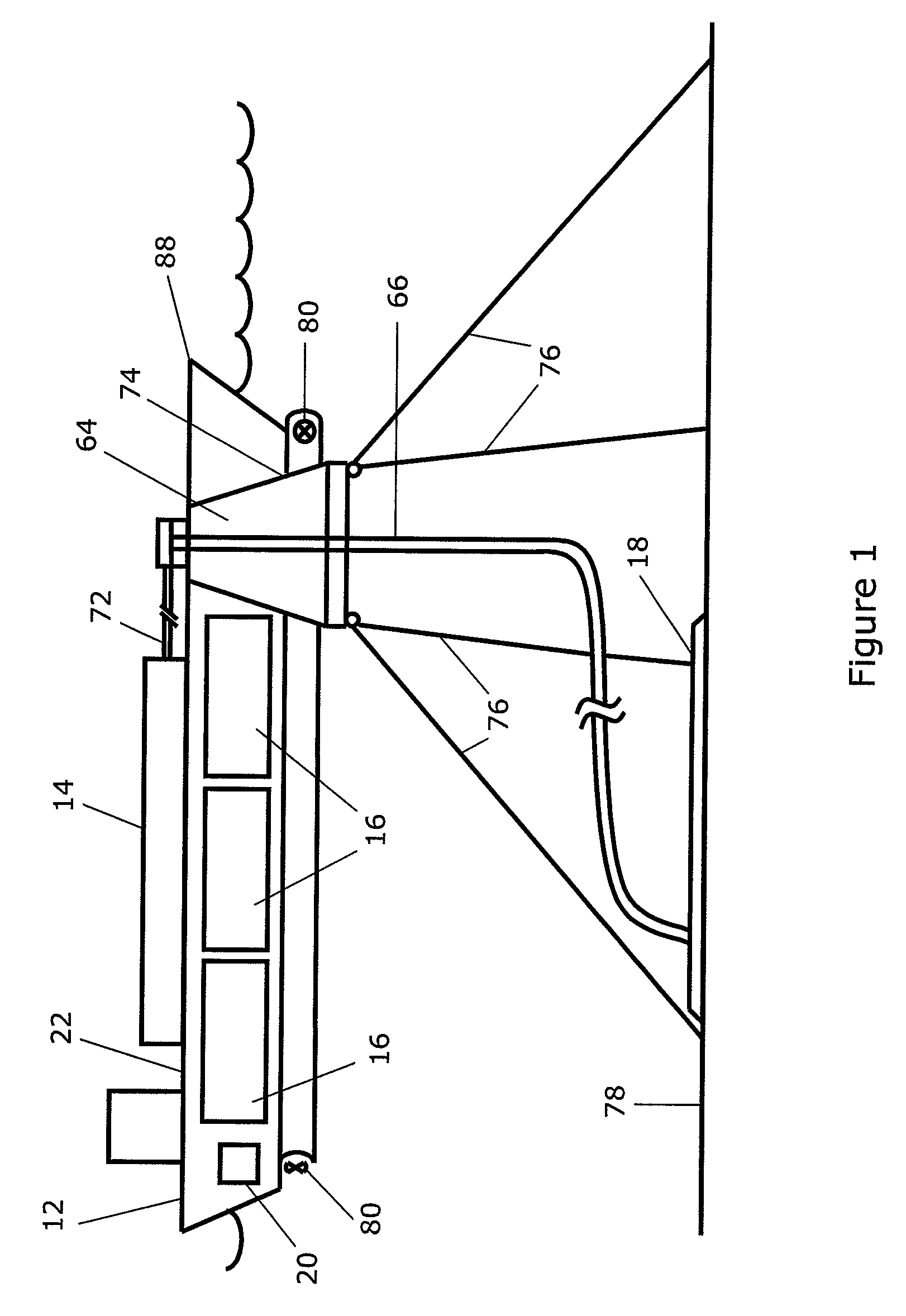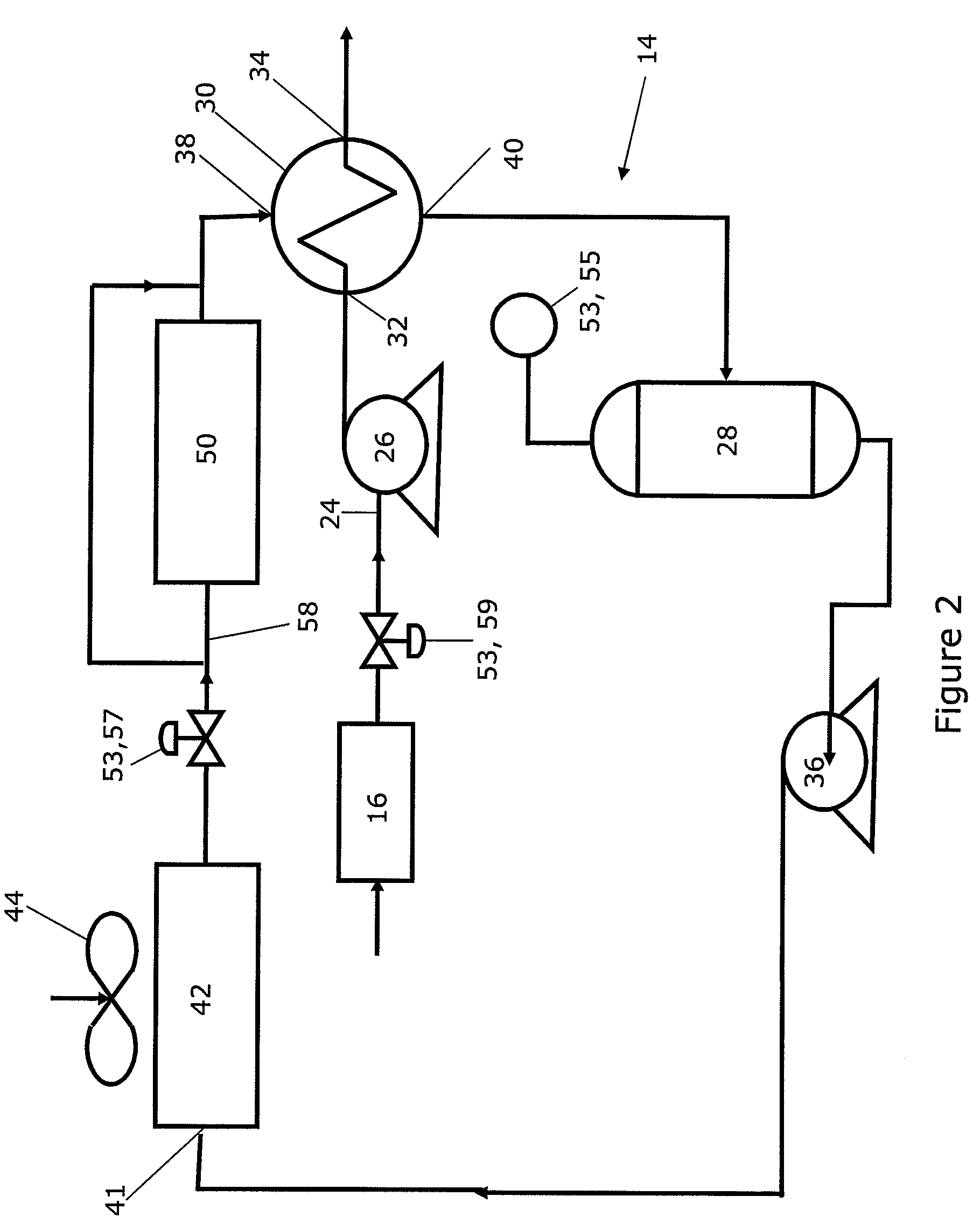Continuous Regasification of LNG Using Ambient Air
a technology of ambient air and liquefied natural gas, which is applied in the direction of gaseous fuels, lighting and heating equipment, applications, etc., can solve the problems of lng vaporisation but has become less attractive, the cost of building and operating such facilities is significant, and the regasification facility is typically larg
- Summary
- Abstract
- Description
- Claims
- Application Information
AI Technical Summary
Benefits of technology
Problems solved by technology
Method used
Image
Examples
Embodiment Construction
[0040]Particular embodiments of the method and apparatus for regasification of LNG using ambient air as the primary source of heat for vaporization are now described, with particular reference to the offshore regasification of LNG aboard an LNG Carrier, by way of example only. The present invention is equally applicable to use for an onshore regasification facility or for use on a fixed offshore platform or barge. The terminology used herein is for the purpose of describing particular embodiments only, and is not intended to limit the scope of the present invention. Unless defined otherwise, all technical and scientific terms used herein have the same meanings as commonly understood by one of ordinary skill in the art to which this invention belongs. In the drawings, it should be understood that like reference numbers refer to like members.
[0041]Throughout this specification the term “RLNGC” refers to a self-propelled vessel, ship or LNG carrier provided an onboard regasification fa...
PUM
 Login to View More
Login to View More Abstract
Description
Claims
Application Information
 Login to View More
Login to View More - R&D
- Intellectual Property
- Life Sciences
- Materials
- Tech Scout
- Unparalleled Data Quality
- Higher Quality Content
- 60% Fewer Hallucinations
Browse by: Latest US Patents, China's latest patents, Technical Efficacy Thesaurus, Application Domain, Technology Topic, Popular Technical Reports.
© 2025 PatSnap. All rights reserved.Legal|Privacy policy|Modern Slavery Act Transparency Statement|Sitemap|About US| Contact US: help@patsnap.com



